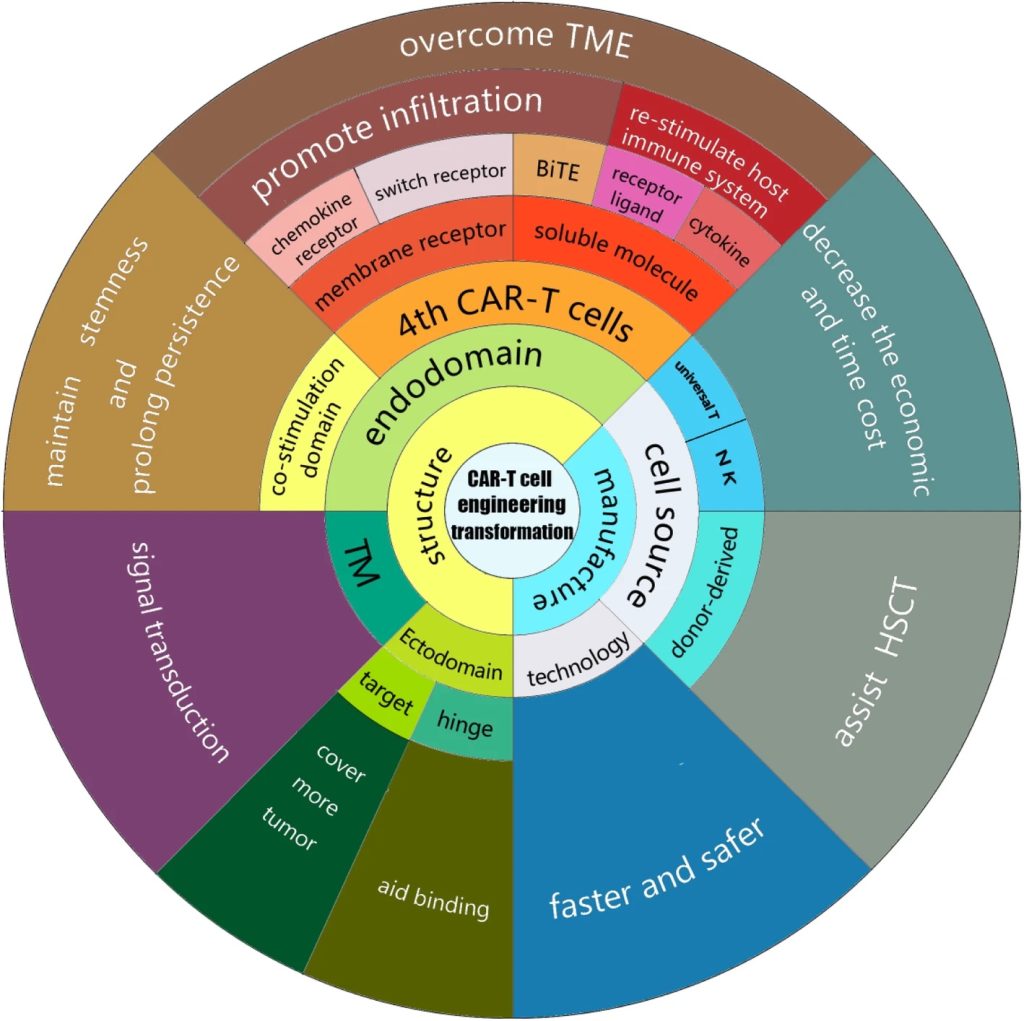Chimeric antigen receptor (CAR)-T cell therapy is a revolutionary cancer treatment in which engineered CARs redirect lymphocytes, typically T cells, to recognize and destroy cells expressing a specific target antigen. While not as commonly used as immune checkpoint inhibitors, they are now widely available and have demonstrated the same ability to eradicate advanced leukemias and lymphomas and cause sustained remission for several years.1,2
The specificity and binding affinity of the CAR to the target antigen are critical for the therapy’s success and are primarily determined by the scFv (single-chain variable fragment) derived from monoclonal antibodies. This integration of antibody discovery into CAR-T cell design is pivotal in enhancing the precision of cancer immunotherapy.
The Role of Antibody Discovery in CAR-T Cell Engineering
Antibody discovery techniques, such as phage display, hybridoma technology, or single B-cell cloning, are employed to isolate and characterize potent antibodies that can recognize and bind to specific epitopes on target cells. These antibodies form the basis of the CAR’s antigen recognition domain, defining the therapy’s targeting mechanism and directly influencing its therapeutic efficacy.
The specificity of CAR-T cells is necessary since off-target effects can lead to severe toxicities, such as cytokine release syndrome (CRS) or neurotoxicity. CRS can be life-threatening but may be treated with the anti-IL-6 receptor antagonist tocilizumab.3 Advanced antibody engineering techniques are utilized to modify and optimize antibodies’ affinity and specificity towards target antigens. For example, affinity maturation and humanization of scFv fragments are critical steps to reduce immunogenicity and improve the safety profile of CAR-T cell therapies.
Recent Advancements in CAR-T Cell Therapy
Recent innovations in CAR-T cell therapy include the development of dual-targeting CARs, incorporation of suicide genes for safety, and use of allogeneic ‘off-the-shelf’ CAR-T cells. Each of these advancements leverages unique aspects of antibody engineering to enhance therapeutic outcomes. For instance, dual CARs utilize two different scFvs to target multiple antigens, thereby reducing the risk of tumor escape due to antigen loss.4
Despite significant successes, challenges in CAR-T cell therapy persist, including managing severe side effects, overcoming the immunosuppressive tumor microenvironment, and treating solid tumors effectively. Future research is focusing on discovering new antigens through comprehensive proteomic analyses and developing next-generation CARs that can adapt to changing tumor antigens or microenvironments.
References:
- Sterner, R. C., & Sterner, R. M. (2021). CAR-T cell therapy: Current limitations and potential strategies. Blood Cancer Journal, 11(4), 1-11. https://doi.org/10.1038/s41408-021-00459-7
- Melenhorst, J. J., Chen, G. M., Wang, M., Porter, D. L., Chen, C., Collins, M. A., Gao, P., Bandyopadhyay, S., Sun, H., Zhao, Z., Lundh, S., Nobles, C. L., Maji, S., Frey, N. V., Gill, S. I., Loren, A. W., Tian, L., Kulikovskaya, I., Gupta, M., . . . June, C. H. (2022). Decade-long leukaemia remissions with persistence of CD4+ CAR T cells. Nature, 602(7897), 503-509. https://doi.org/10.1038/s41586-021-04390-6
- Frey, N. and Porter, D. (2018) ‘Cytokine release syndrome with chimeric antigen receptor T cell therapy’, Biology of Blood and Marrow Transplantation, 25(4). doi:10.1016/j.bbmt.2018.12.756.
- Huang, R., Li, X., He, Y. et al. (2020). Recent advances in CAR-T cell engineering. J Hematol Oncol 13, 86. https://doi.org/10.1186/s13045-020-00910-5

